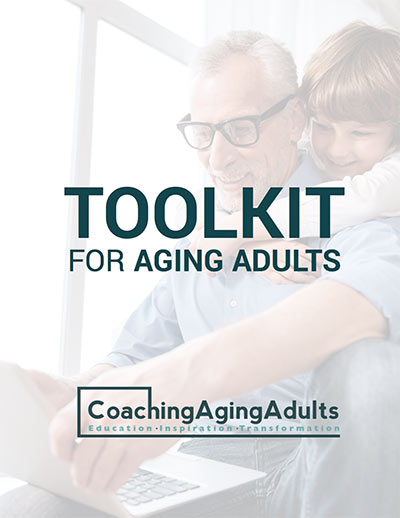Caring for a loved one is deeply rewarding, yet it brings challenges that can impact the caregiver’s health. This blog post delves into the nutrition-related challenges faced by caregivers, offering practical tips to maintain their health and energy. From time constraints for balanced meals to emotional eating, irregular meal times, and nutrient deficiencies, we’ll systematically address these issues, providing strategies to nourish both the body and the soul.
Lack of Time for Balanced Meals
Balancing caregiving responsibilities, doctors’ appointments and medication management can leave little time for preparing well-balanced meals. However, it’s essential to prioritize your nutrition, as it directly impacts your ability to provide effective care. Here are some strategies to overcome the lack of time for balanced meals:
Meal Prepping and Planning: Just as you plan your caregiving schedule, dedicating time to meal prepping can make a world of difference. Set aside an hour each week to plan your meals, keeping them simple and nutritious. One-pot meals and sheet pan dinners are great options that require minimal clean-up.
Batch Cooking: To save time during busy days, consider batch cooking. Prepare large quantities of your favorite dishes and freeze them for later use. This way, you’ll always have a healthy meal ready to go, even when time is limited.
Use Checklists and Planners: Organize your meals, schedules, and systems using checklists and planners. Atul Gawande’s “The Checklist Manifesto” emphasizes the importance of systems to make life easier and prevent mistakes. As a caregiver, these tools can help you manage your responsibilities and prioritize self-care effectively.
Quick and Healthy Recipes: Explore simple and nutritious recipes that can be prepared in just a few minutes. For example, using rotisserie chicken from a store or preparing it in various ways can be a versatile and time-saving option. Here are some ideas for using rotisserie chicken:
- Chicken sliders with barbecue sauce.
- Barbecue chicken pizza.
- Ranch chicken wrap.
- Chicken salad for sandwiches or salads.
- Chicken in fried rice or tacos.
- Chicken filling for casseroles.
- Chicken pot pie.
Adapt Recipes: Be flexible with recipes and use them as inspiration. Modify them based on the ingredients you have on hand, allowing for creativity while ensuring a balanced diet.
Emotional Eating
Stress and anxiety are common companions on the caregiver journey, making emotional eating a frequent coping mechanism. When the secret stash of chocolate starts calling your name, it’s important to address emotional eating in a healthy way. Here’s how:
Mindful Eating: Instead of reaching for unhealthy snacks, practice mindful eating. Take a moment to assess whether you’re genuinely hungry or just seeking comfort. If it’s the latter, consider healthier alternatives like a piece of fruit or a small handful of nuts.
Stress Management Techniques: Implement stress management techniques such as deep breathing, meditation, or yoga. These practices can help reduce stress and decrease the urge to turn to emotional eating.
Support Groups: Joining caregiver support groups, either in your community or online, can provide a space to share experiences and coping strategies. Knowing that you’re not alone in your journey can alleviate the emotional burden and reduce the need for emotional eating.
Inconsistent Meal Times
Caregivers often find themselves adjusting their meal times to accommodate the unpredictable schedules of those they are caring for. However, inconsistent meal times can lead to skipped meals or unhealthy snacking. Here’s how to maintain better control over your eating schedule:
Set Alarms and Reminders: Use technology to your advantage. Set alarms or reminders on your smartphone to prompt you to take breaks and eat balanced meals. There are countless apps available for this purpose, making it easier to prioritize your nutrition.
Create a Meal Routine: Even if your meal times have to be flexible, establish a routine that works for you and your caregiving responsibilities. Consistency can help ensure that you don’t neglect your own nutrition.
Prepare Grab-and-Go Snacks: To address the unpredictability of your schedule, have a supply of healthy grab-and-go snacks ready. Nutritious options like mixed nuts, yogurt, or pre-cut fruits and vegetables can keep you fueled on busy days.
Nutrient Deficiency
Providing care to others often means that caregivers overlook their own nutritional needs, leading to nutrient deficiencies. To prevent this and ensure you’re getting the essential nutrients, consider the following:
Stock Your ‘Kitchen’: Just as a chef starts with staple ingredients, caregivers need to stock their ‘kitchen’ with essential staples for nutrition. Prioritize proteins to keep your muscles strong, incorporate fiber for digestion, and include healthy fats found in foods like avocados and fish to support brain function.
Supplements: If it’s challenging to meet all your nutritional needs through food alone, consult with a healthcare professional about the potential need for supplements. They can provide guidance on appropriate vitamins or minerals to address any deficiencies.
Caring for a loved one as a caregiver is a noble and often challenging role. It’s crucial to recognize the importance of self-care, particularly when it comes to maintaining a healthy diet. By addressing the lack of time for balanced meals, emotional eating, inconsistent meal times, and nutrient deficiencies, caregivers can better take care of themselves and continue to provide the support their loved ones need.
Remember that you’re not alone in this journey. Seek out support groups, use technology to your advantage, and plan your meals with the same dedication you put into your caregiving responsibilities. Your well-being matters, and nourishing your body with good food will not only benefit you but also enhance your ability to provide the best care possible.
Life’s a journey filled with unexpected roles and challenges, but with the right strategies and a commitment to self-care, you can tackle the script in hand, learning your lines and cues as you go along. Embrace Act 2 with confidence, knowing that you’re equipped to nourish both your loved ones and yourself.



